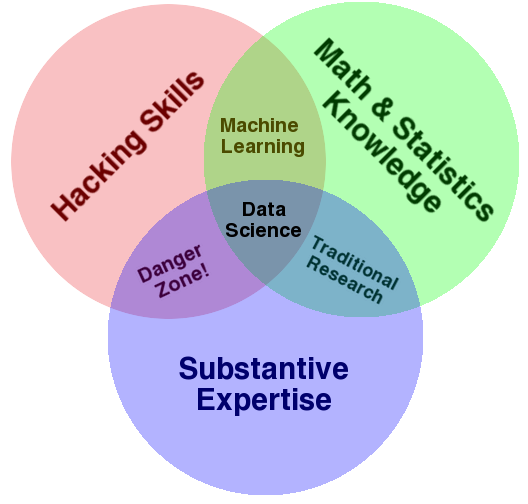

Data science is an interdisciplinary field that combines mathematical and statistical foundations with advanced computational power and the capacity to extract knowledge from data in specific domains.
"Data science – the grand interdisciplinary challenge to extract new knowledge from big data through advanced analytics – presents a transformational opportunity for Purdue." by Jay Akridge, Provost and Executive Vice President for Academic Affairs and Diversity
As an emerging interdisciplinary field, data science is a term beyond any single definition. Please check out the post, Defining Data Science: The What, Where and How of Data Science, for a detailed explanation of what is data science
The classic three cores of data science by Drew Conway 2010:

The ten data science foundations defined by National Academies of Science, Engineering, and Medicine:
The six data science principles in the data science curriculum (merged from the ten data science foundations by Shao et al. 2021)
'Data' principles:
'Science' principles:

